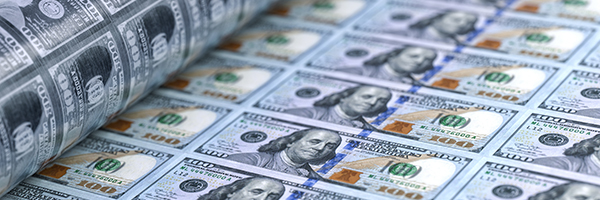I expect investors and the stock market to behave as if Wednesday’s meeting of the Federal Reserve has settled the important questions of how high (will the Fed take its benchmark Fed Funds interest rate) and how long (will the Fed continue to raise interest rates.)
Which means improved odds for an end-of-the-year Santa Claus rally. Historical patterns favor a Santa Claus rally in the last 5 trading days of the old year and the first two days of the new year.
In truth the meeting won’t actually settle anything–the Fed has no more certainty on how sticky inflation will be in 2023 than you or I do. There are signs that the economy and inflation are starting to respond to higher interest rates as monetary orthodoxy predicts they will, but there are signs that inflation is really, really sticky this time due to supply chain disruptions, a chaotic global energy market (Think soaring prices for diesel fuel around the world might make everything more expensive?), and pent up wage demand that threatens to result in a wage/price spiral.
But that isn’t stopping Wall Street strategists from issuing targets for stock performance in 2023. In the last week, calls seem to have solidified around a figure of a 10% gain for the Standard & Poor’s 500 by the end of 2023.
To me, that sounds suspiciously like a “Let’s take the average” of optimistic and pessimistic calls for the year. I don’t buy the idea of averaging the year. We’re extremely likely to have frightening volatility–a big drop to restest the June 2022 low and big rallies of 15% or more. There’s certainly nothing in the cards that I can see to suggest a steady climb to a 10% gain for the year even if the volatility netted out to 10%. (I’d also note that a 10% gain in 2023 would lag the gain in the recoveries of 2009 and 2019.
On Wednesday, we’ll learn what the Fed’s best guess now is on when inflation will peak and how high interest rates might go in 2023 in the Fed’s Dot Plot projections, revised for the first time since September. Absent any actual certainty from some source outside the Fed, the stock market will respond as if the Fed’s projections were a description of the coming reality instead of the Fed’s best guess on what the future might bring.
Right now, pre-meeting, the market seems to be divided between those who expect an early end to the Fed’s cycle of interest rate increases (and a lower peak rate) and those who expect that the Fed will have to raise interest rates enough in its fight against inflation to bring on a recession in 2023. (If interest rates aren’t already high enough to bring on a recession, these proponents of the negative view would add.)
In the optimistic view, an earlier/lower peak in interest rates would result in a rally relatively early in 2023 as investors bought stocks in anticipation of the end of interest rate increases from the Fed.
In the pessimistic view, a later/higher peak in interest rates would result in another leg down in the continuing Bear Market to a retest of the June 12 low on the S&P 500 at 3667 or the September 26 low at 3486. The September low is 348 points or 9.7% below the December 9 close at 3934.
Bloomberg recently conducted an informal survey of 134 fund managers including BlackRock and Goldman Sachs. Top worries, cited by 48% of respondents, were stubbornly high inflation or a deep recession. Other top worries included the energy crisis in Europe and Covid lockdowns in China. Respondents favored companies that can defend earnings through an economic downturn such as dividend payers, insurance, health care, and low-volatility stocks. For fund managers, better news on inflation and growth could be the catalysts for stronger performance, according to almost 70% of respondents. They also cited a full China reopening and a ceasefire in Ukraine as upside triggers.
So what do you do?
Enjoy the Santa Claus rally if we get it–and consider selling into it. The first half of 20223 is shaping up as tough on company earnings. Take a look at any high price-to-earnings ratio stocks that have done well since the September bottom. If the market gets sufficiently giddy to send the VIX “fear index” back down to the 19-22 range that we saw in early December, I’d risk a bet on the market sending the VIX back up in February and buy Call Options on the VIX. (The price of the call options will go up if fear returns and the VIX climbs.)


